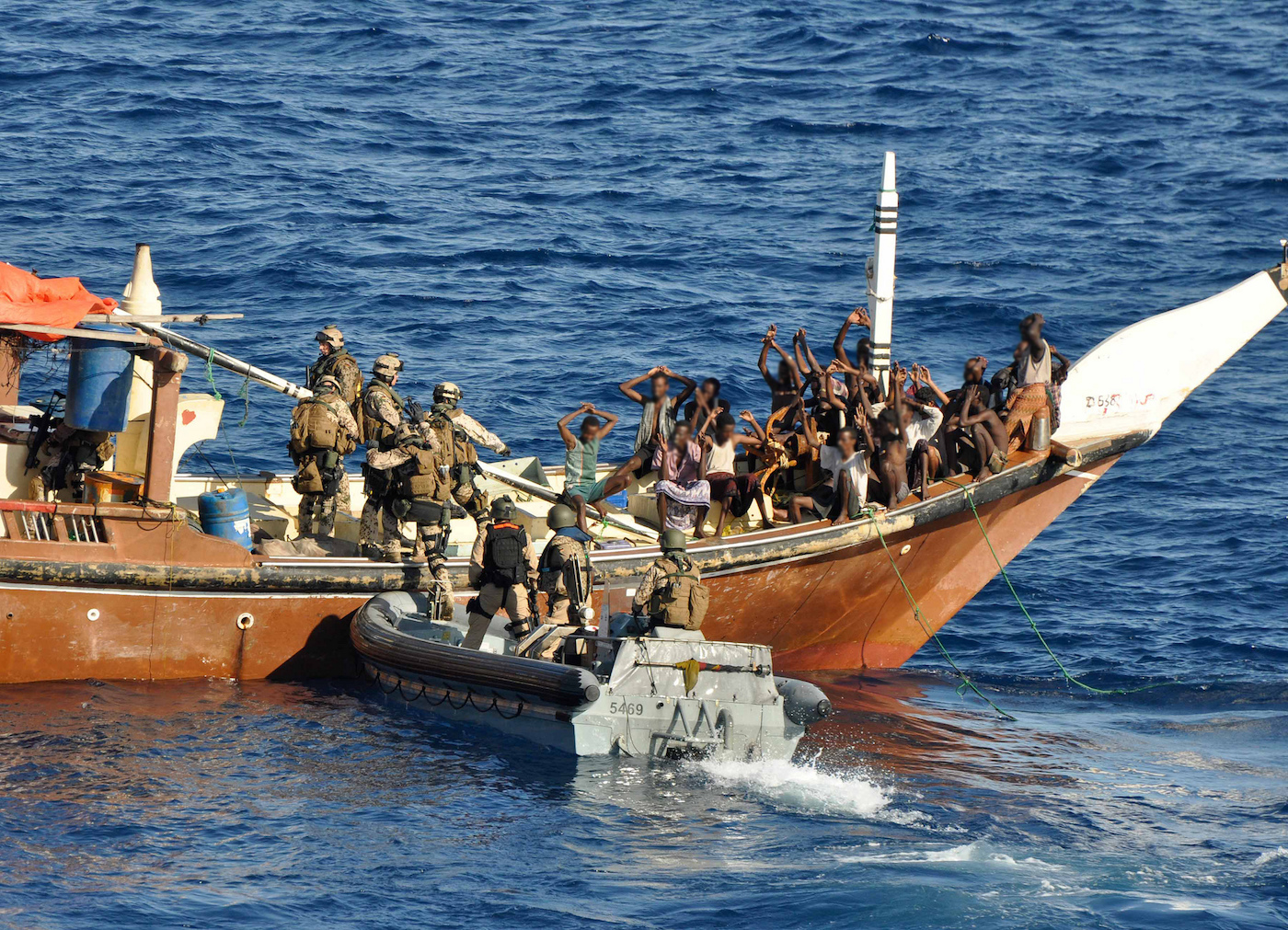Piracy off Somalia – an exaggerated problem?

Piracy off Somalia has been a headline-grabbing phenomenon for almost a decade. In recent years, however, the number of successful attacks against ships in the western Indian Ocean has been very low. Targets were mostly fishing vessels and traditional dhows which are used to transport cargoes within the region.
At the same time, the number of warships that had been sent to the Indian Ocean to protect one of the world’s most important shipping routes dropped significantly. Nato’s Operation Ocean Shield ended in December 2016. The EU-led Operation Atalanta was extended until December 2018 but member-states are now contributing few ships and aircraft. Other challenges, such as migration in the Mediterranean, are more important.
This year, Somali piracy has made headlines yet again. On 13 March, the small tanker Aris 13 was hijacked. It was highlighted as the first successful attack against a merchant vessel since 2012. Several other attacks followed, including one in April that was foiled by the Chinese and the Indian navies despite no apparent coordination of their efforts. Only two of the attacks reported so far in 2017, however, have been similar to the heydays of Somali piracy between 2008 and 2011. The other incidents may be linked to issues such as commercial disputes. Some analysts have even pointed out that ‘there is a dynamic behind these hijackings that is separate to those attacks against merchant vessels in transit’.
As early as 2015, a report for the UN Security Council highlighted that criminal groups in Somalia still have the capabilities and the intent to attack merchant ships. Attacks were therefore a question of opportunity. In former havens for Somali pirates such as Eyl, these men are still considered to be protectors of fish and other resources in the sea. At the same time, the recently published State of Maritime Piracy report from Oceans Beyond Piracy (OBP) shows that the area off Nigeria is much more dangerous for seafarers than the Indian Ocean.
Piracy off Somalia not a priority
For the shipping industry and particularly for seafarers, piracy and armed robbery at sea remain problems in various regions. Merchant ships are unique – they combine a workplace with a temporary home. Even seemingly low-key attacks such as thefts from ships at anchor without any confrontation between perpetrators and crew have a psychological impact. In few other industries, people have to work under a constant threat of attacks in specific regions. This threat comes on top of many other hardships that seafarers already have to face.
Coastal states affected by piracy, however, often have other priorities. Somalia is a perfect example. The current drought affecting millions of people is certainly more pressing for the federal government than a few attacks against ships. The future of the AMISOM mission in the country and the fight against Al Shabaab were also key issues of a recent conference in London and in April. The Pentagon even confirmed that ‘a few dozen’ troops will be sent to Somalia as part of a counter-terrorism operation. In short, piracy off Somalia – and maritime security in general – remain challenges but are hardly political priorities.
In other countries, the situation is similar, albeit less dramatic. The Africa Center for Strategic Studies has pointed out that ‘national security and economic policies rarely emphasize maritime security due to a lack of awareness, political will, and resources’. Moreover, the definition of ‘maritime security’ varies significantly on the national level. Missing capacities could be filled by the private sector but that may also be controversial. Nevertheless, coastal states have to address maritime security issues to develop the often-quoted ‘blue economy’.
Counting the costs
It is extremely complicated to determine the value of this blue economy. Even calculating the costs of piracy alone is far from easy. The OBP report mentioned above, for example, focuses on first-order costs. That includes money spent on mitigation measures or direct impacts of pirate attacks.
Second-order costs may be much higher yet it is virtually impossible to provide exact figures. The World Bank offers a good example with a study on Somali piracy that put the economic impact at $18 billion, including impacts on trade and tourism in the region. Such figures are certainly debatable. Tourists who do not go to Kenya will spend their money elsewhere. The same is true for foreign investors.
For coastal states, however, such costs are important in the context of any maritime strategy, aimed at developing the blue economy. The government of the Seychelles, an island nation in the Indian Ocean, has been particularly active in this area. However, the concept is equally applicable to coastal states, both in Africa and elsewhere.
Broad challenges
Maritime security is a topic that governments have to address to foster the blue economy. That is not limited to piracy. Together with other programmes that are part of the One Earth Future Foundation, OBP has therefore developed a new report that underlines the interconnected nature of maritime security threats.
After all, it would not make sense to spend money on a police force that only deals with bank robberies, not with other crimes. Similarly, it is unlikely that governments will invest money and resources to reduce pirate attacks while ignoring other criminal activities at sea such as IUU fishing, smuggling and many other issues.

